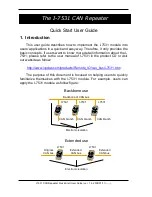
Direct Gas Make-Up Air
22
4. Check Plenum Fan Radial Overlap, Offset,
Gap, and Wheel Alignment (if applicable)
Backward-Curved Plenum Fan Radial Overlap
Proper wheel and inlet cone overlap is shown in the
chart. The overlap can be adjusted by loosening the
setscrews in the wheel and moving the wheel to the
correct position.
Backward-Curved Plenum Fan Radial Overlap
Overlap
Fan
Size
Overlap
in. (cm)
P114
0.14 (0.36)
P115
0.25 (0.64)
P120
0.20 (0.51)
P125
0.26 (0.66)
P128
0.28 (0.71)
Backward-Curved Plenum Fan Radial Offset
Radial offset is adjusted by loosening the wheel hub
from the shaft and moving the wheel to the desired
position along the shaft. The correct radial offset
between the inlet cone and wheel is shown in the chart.
There is a smooth feel to the profile when moving from
one component to the other.
Inlet
Cone
Wheel
Offset
Fan
Size
Offset
in. (cm)
P127
0.375 (0.95)
P222
0.250 (0.64)
P227
0.375 (0.95)
Backward-Curved Plenum Fan Radial Offset
Mixed Flow Plenum Fan Alignment
If necessary, adjust wheel position by loosening the
wheel hub from the motor shaft. Adjust wheel position
so that a straight edge held tight to the wheel cone just
touches the inlet cone.
Wheel Cone
Inlet Cone
Gap
Straight Edge
Mixed Flow Alignment
Supply Fan
Pre-Start Checks
Units with a direct drive backward-curved plenum
supply fan must always be supplied with a Variable
Frequency Drive (VFD) due to the direct drive
arrangement on the supply fan. Before proceeding
further, identify if this is a constant volume or Variable
Air Volume (VAV) unit. A VAV unit will have a bypass
damper located adjacent to the burner. Reference the
Start-Up: Direct Gas-Fired Heating, Optional Features,
Variable Air Volume
section in this Installation,
Operation, and Maintenance Manual for further
information.
1. Check Fasteners for Tightness
Check fasteners, set screws and locking collars on the
fan, bearings, drive, motor base, and accessories for
tightness.
2. Check Supply Fan Clearance
The rotation of the supply fan wheel is critical. It must be
free to rotate without striking or rubbing any stationary
objects.
3. Check V-Belt Alignment (if applicable)
Check the V-belt drive
for proper alignment and
tension. Check the tension
by measuring the deflection
in the belt as shown.
Check the alignment by using a
straight edge across both sheaves.
Differences in sheave width must
be accounted for.
WARNING
Disconnect and lock-out all power and gas before
performing any maintenance or service to the unit.
Failure to do so could result in serious injury or death
and damage to equipment.
Check the housing, fan, and ductwork for any foreign
objects before running the fan.
TOOLS REQUIRED
• Voltage Meter (with wire probes)
• Amperage Meter
• Pressure Gauges
• Tachometer
• Thermometer
• U-tube manometer or equivalent
Drive Alignment
Belt Span
Deflection = Belt Span
64
Belt Tension
















































